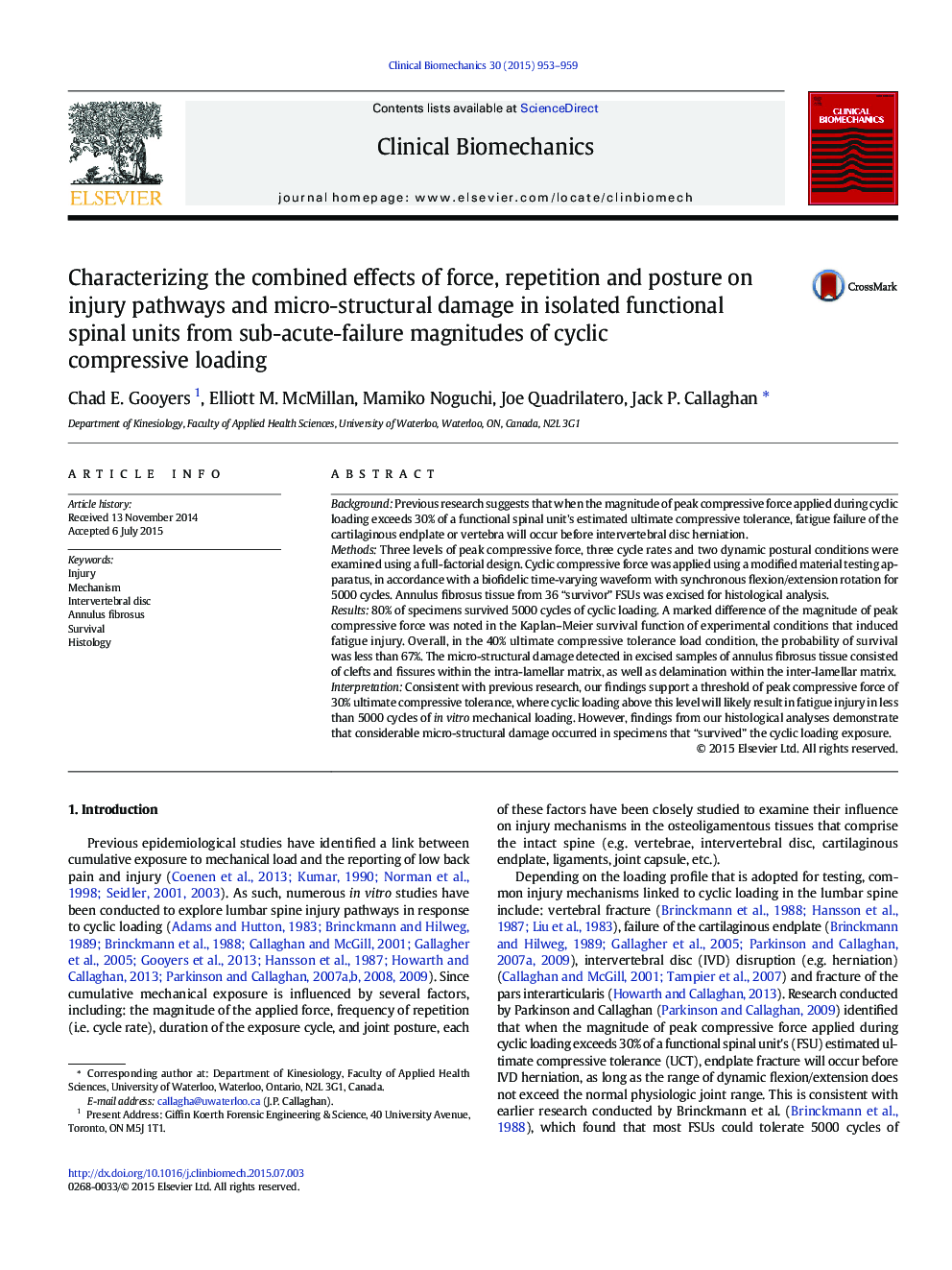| Article ID | Journal | Published Year | Pages | File Type |
|---|---|---|---|---|
| 4050220 | Clinical Biomechanics | 2015 | 7 Pages |
•80% of specimens survived 5000 cycles of cyclic compressive loading.•Peak compressive force significantly impacted Kaplan–Meier survival functions.•Considerable micro-structural disruption was observed in “survivor” specimens.•Findings support a non-linear association between peak force and risk of fatigue injury.
BackgroundPrevious research suggests that when the magnitude of peak compressive force applied during cyclic loading exceeds 30% of a functional spinal unit's estimated ultimate compressive tolerance, fatigue failure of the cartilaginous endplate or vertebra will occur before intervertebral disc herniation.MethodsThree levels of peak compressive force, three cycle rates and two dynamic postural conditions were examined using a full-factorial design. Cyclic compressive force was applied using a modified material testing apparatus, in accordance with a biofidelic time-varying waveform with synchronous flexion/extension rotation for 5000 cycles. Annulus fibrosus tissue from 36 “survivor” FSUs was excised for histological analysis.Results80% of specimens survived 5000 cycles of cyclic loading. A marked difference of the magnitude of peak compressive force was noted in the Kaplan–Meier survival function of experimental conditions that induced fatigue injury. Overall, in the 40% ultimate compressive tolerance load condition, the probability of survival was less than 67%. The micro-structural damage detected in excised samples of annulus fibrosus tissue consisted of clefts and fissures within the intra-lamellar matrix, as well as delamination within the inter-lamellar matrix.InterpretationConsistent with previous research, our findings support a threshold of peak compressive force of 30% ultimate compressive tolerance, where cyclic loading above this level will likely result in fatigue injury in less than 5000 cycles of in vitro mechanical loading. However, findings from our histological analyses demonstrate that considerable micro-structural damage occurred in specimens that “survived” the cyclic loading exposure.
